Miniature circuit breakers commonly known as MCB, are mechanically operated switches cum circuit protection devices. It is an electro-mechanically operated automatic circuit protection device and is used to interrupt a circuit during overload and short circuits. It can be used as an alternative to fuses for domestic applications. They can be reused even after the safe interruption of overloads or short circuits.
Constructional of MCB
Every MCB consists of the following part:
1. External Casing:
External Casing holds all the internal components firm and protects them from dust. It is made of insulating materials such as plastic or ceramics.
2. Contacts:
An MCB consists of a pair of contact per phase. One of them is a fixed contact and the other is movable. The movable contact is attached to the external knob. It enables the opening and closing of the breaker.
3. Knob:
External knobs are present to manually turn ON and OFF the device.
4. Mechanical Latch:
A latch arrangement is made inside MCBs to hold the contacts under spring tension at the ON position.
5. Bimetallic strip:
The bimetallic strip offers delayed overload protection by sensing the prolonged flow of current greater than its rated current.
6. Solenoid:
Solenoid offers instantaneous protection against short circuits by releasing the mechanical latch. Solenoid gets activated when the current through the coil exceeds a particular value, normally more than 3 times its rated current. This solenoid is not activated by overloads.
7. Arc Chutes:
Arc chutes are used for splitting and quenching arcs. This enables arc extinction during short circuits and on-load opening of the breaker.
Functions of MCBs:
Miniature circuit breakers perform four important functions:
1. Switching
They can be switched ON and OFF manually. This functionality is highly useful, especially during maintenance. An internal latch arrangement is made such that it automatically holds the fixed contact as soon as the knob is pushed to the ON position. When turned OFF, the pressure given by our finger over the knob releases the latch and opens the contacts.
2. Overcurrent protection
When a piece of equipment is overloaded it draws more current from the source. This current flows through the bimetallic strip and heats it up. A bimetallic strip that deforms on heating will knock down the latch, thereby opening the contact and isolation the equipment from the supply.
3. Short Circuit Protection
During short circuits, a sudden rise in current produces MMF powerful enough to project plunder towards the latch and release it, thereby opening the contacts.
4. Arc Quenching
When the contacts are opened under load, an arc is formed between the fixed and moving contacts. The contacts are designed such that the arc formed between them moves outwards through arc runners and reaches the arc splitters or arc chutes. Arc splitters or arc chutes are arrangements to increase the length of the arc, splitting and quenching it.
The operation of MCBs is affected by environmental temperature, particularly the deflection of the bimetallic strip. Hence it is very important to choose an appropriate MCB based on its ambient temperature.
Miniature Circuit Breakers may be of single, two, three, or four-pole versions. In two, three, and four-pole versions, the respective number of single pole devices are joined together and their knobs are combined so that fault cleared by anyone of the poles will open all the poles together.
Principle of operation of a miniature circuit breaker
In the case of overloads, a current more than the rated current is driven through the contact and the bimetallic strip. As the current flows through the bimetallic strip, it gets heated up and deflects by bending and thus releasing the mechanical latch. The deflection time of the bimetallic strip depends on the amount of current flowing through the strip. The higher the current faster will be the deflection of the bimetallic strip.
During short circuits, a transient current flowing through the solenoid forces the plunger towards the latch. This action instantaneously releases the mechanical latch and opens the contacts immediately.
Types and Selection
We have to keep in mind the following terms while choosing an MCB.
- Application
- Rated current and number of poles
- Operating Voltage
- Rated frequency
- Ultimate breaking capacity
- Trip Curve Characteristics
- Ambient temperature
1. Application
The area of application is an important factor in the selection process. Once the application is known, then it is very easy for us to select the appropriate Miniature circuit breaker. After understanding the application we have to check the following.
2. Rated Current and number of poles
The rated current of the MCB to be used depends on the load current of the equipment to be protected and an ambient operational temperature. They are available in the following ratings: 6A, 10A, 16A, 20A, 25A, 32A, 45A, 50A, 63A, 80A, 100A, 125A. Also, they are available in single, two, three, and four-pole versions.
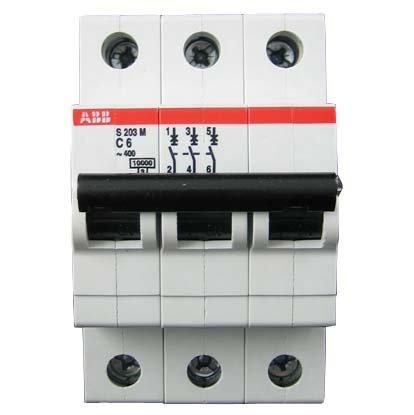
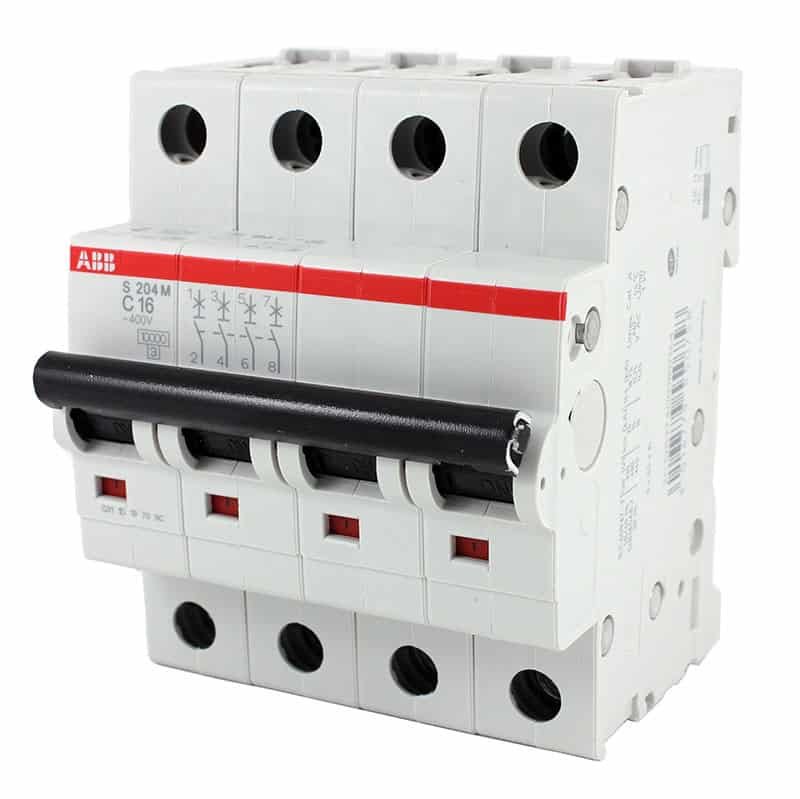
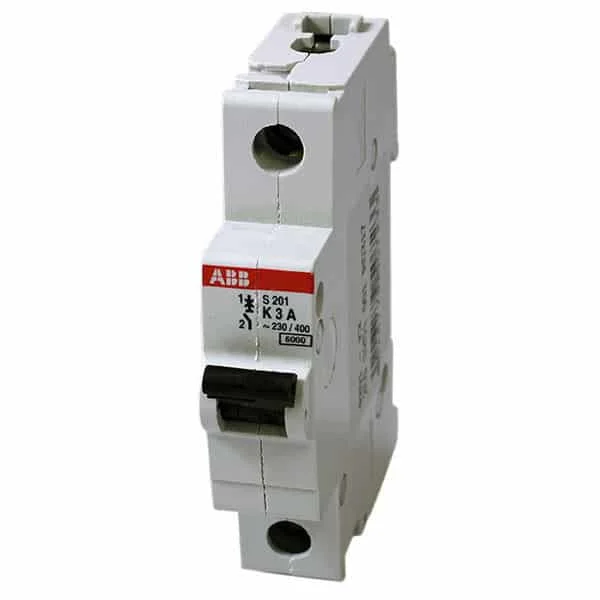
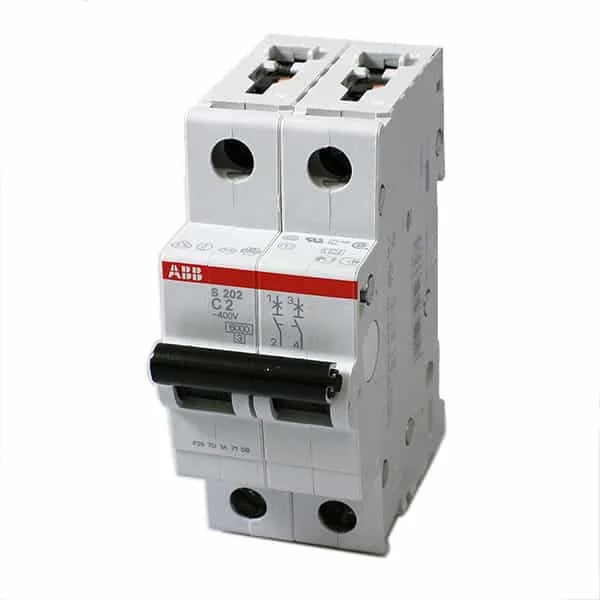
3. Operating voltage.
The rated voltage of the operating equipment/ circuit to be protected should also be considered when selecting an MCB.
4. Rated frequency
The frequency at which the breaker is designed to operate is called rated frequency.
5. Ultimate Breaking Capacity (Icn)
The ultimate breaking capacity of an MCB is the maximum short circuit current it can interrupt safely.
6. Trip curves
Trip curves define the trip current ratings of an MCB. Trip current is the minimum current at which it would trip instantaneously.
| Trip class | Trip Current |
| CLASS B | Above 3 to 5 times rated current. Suitable for cable protection |
| CLASS C | Above 5 to 10 times the rated current. Suitable Domestic and residential applications and electromagnetic starting loads with medium starting currents |
| CLASS D | Above 10(excluding 10) to 20 times the rated current. Suitable for inductive and motor loads with high starting currents. |
| CLASS K | Above 8 to 12 times the rated current. Suitable for inductive and motor loads with high inrush currents |
| CLASS Z | Above 2 to 3 times the rated current. These types of MCBs are highly sensitive to short circuits and are used for the protection of highly sensitive devices such as semiconductor devices. |
Learn more about Trip curves by clicking here.
7. Ambient temperature
The ambient temperature of operation should also be taken into consideration since it may affect the rated current and trip current of the device.
Application
MCBs are used in the protection of lights, refrigerators, Air conditioners, etc. as an alternative for fuses.
Advantages of MCBs over fuses
1. They can act faster than fuses (2-3.5ms) during short circuits.
2. They can offer better overload protection than fuses.
3. They can be reset after the clearance of fault. But fuses need to be rewired or replaced.
4. Safer interruption of short-circuit current and arc quenching.
5. The knob makes the operation of a miniature circuit breaker much easier than a fuse.
6. They can be turned off whenever we want. Therefore, Circuit isolation during maintenance is much easier compared to fuses.
Tripping of MCB and possible faults
A miniature circuit breaker may trip whenever there is a short circuit, overload, or even when they are underrated. The cause of trip should be identified and faults must be cleared before turning ON them again.
When it trips, first of all, check whether there are any visible faults such as short circuits or overloads. If there are no visible fault in the circuit, wait till it cools down and turn it ON again and watch for a moment. If it trips again immediately, that means there is a short circuit in the circuit or equipment it protects. In case it does not trip immediately and trips again after a time interval, then there is a chance that the circuit or equipment is overloaded. Clear the fault in the equipment or circuit and turn on the MCB. Ask for expert advice if required.
Summary
An MCB is a circuit protection device. It can protect a circuit or a piece of equipment from faulty conditions such as overloads and short circuits. The purpose of using it in the circuit is not to prevent overload or short circuits but to protect the circuits from greater damage caused by them. It works on the principle of deflection of the bimetallic strip on heating. It can be used as an alternative to fuses. Unlike fuses, MCB can be reused even after it trips.
Please note:
This article explains the basic principle of operation of an MCB. The constructional features of an MCB may vary on its manufacturers.
Sample datasheet: https://www.se.com/in/en/product-range/61939-miniature-circuit-breaker-acti-9-xc60-mcbs/
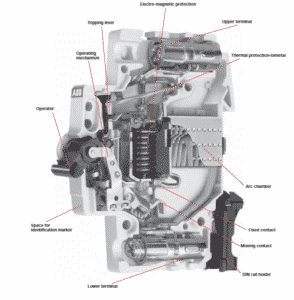
If I connect two 63amp MCB,s together (Electrically and mechanically) at the output would this then give me 126amp supply capability
This is not possible.
can you please explain me principles of MCB protects from single phase short circuit?
During short circuits, a transient current flowing through the solenoid forces the plunger towards the latch. This action instantaneous releases the mechanical latch and opens the contacts immediately and the circuit is isolated.
Good explanation
Really useful information about MCB…thanks
Very usefull
Hello!
I have an MCB which is rated for 240V AC 50Hz. Can I use it in a 125V 60Hz circuit?
Yes you can use.
How can i identify whether it is short circuited or overloaded from Mcb tripping?
To identify the reason behind the trip you need to check the load connected to the MCB. MCB does not indicate identify whether it has tripped from short-circuited or overloaded.
Read: https://www.electricalclassroom.com/circuit-breaker-trip-mcb-trip/
Thank you it is nice explanation AND Very Easy to understand